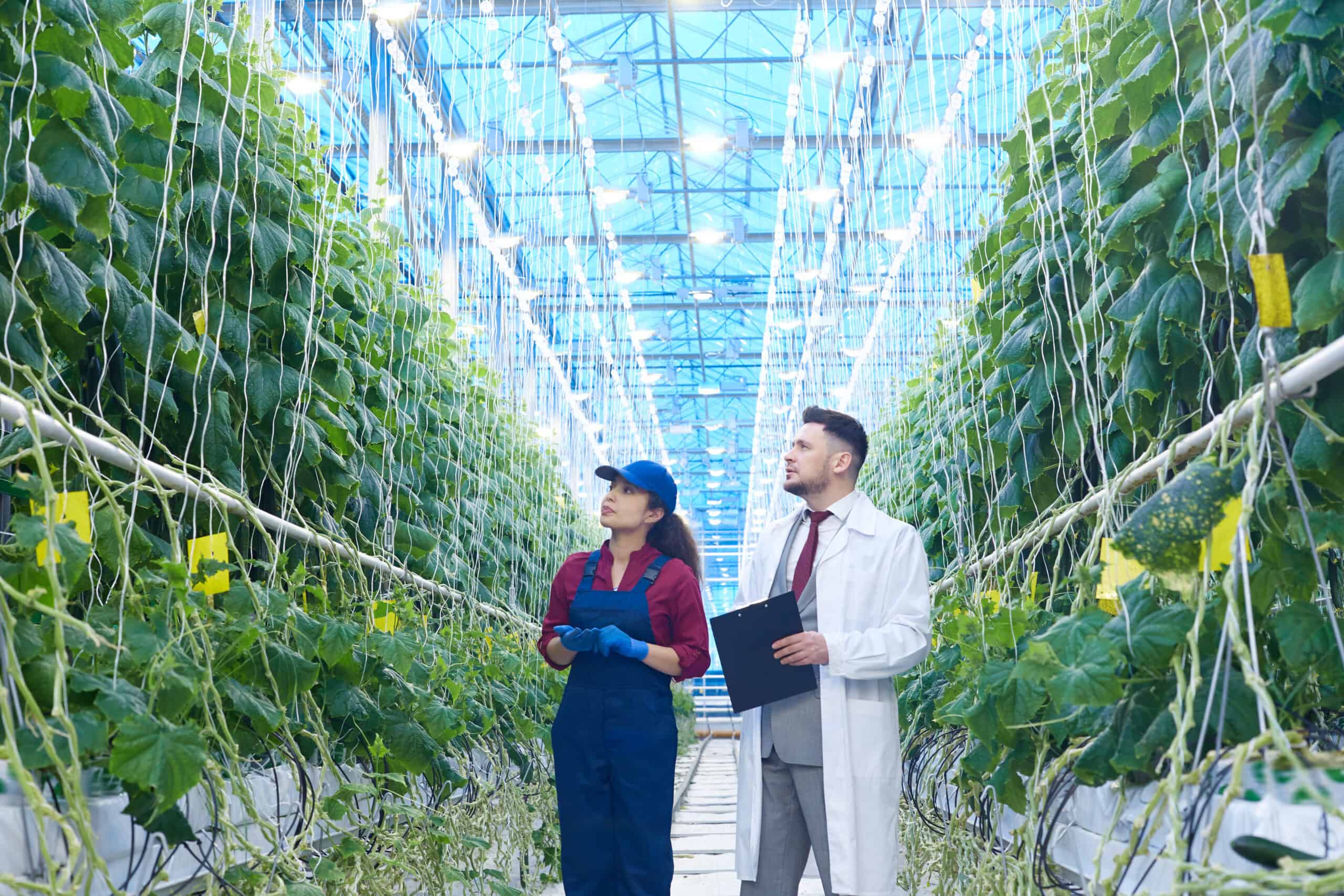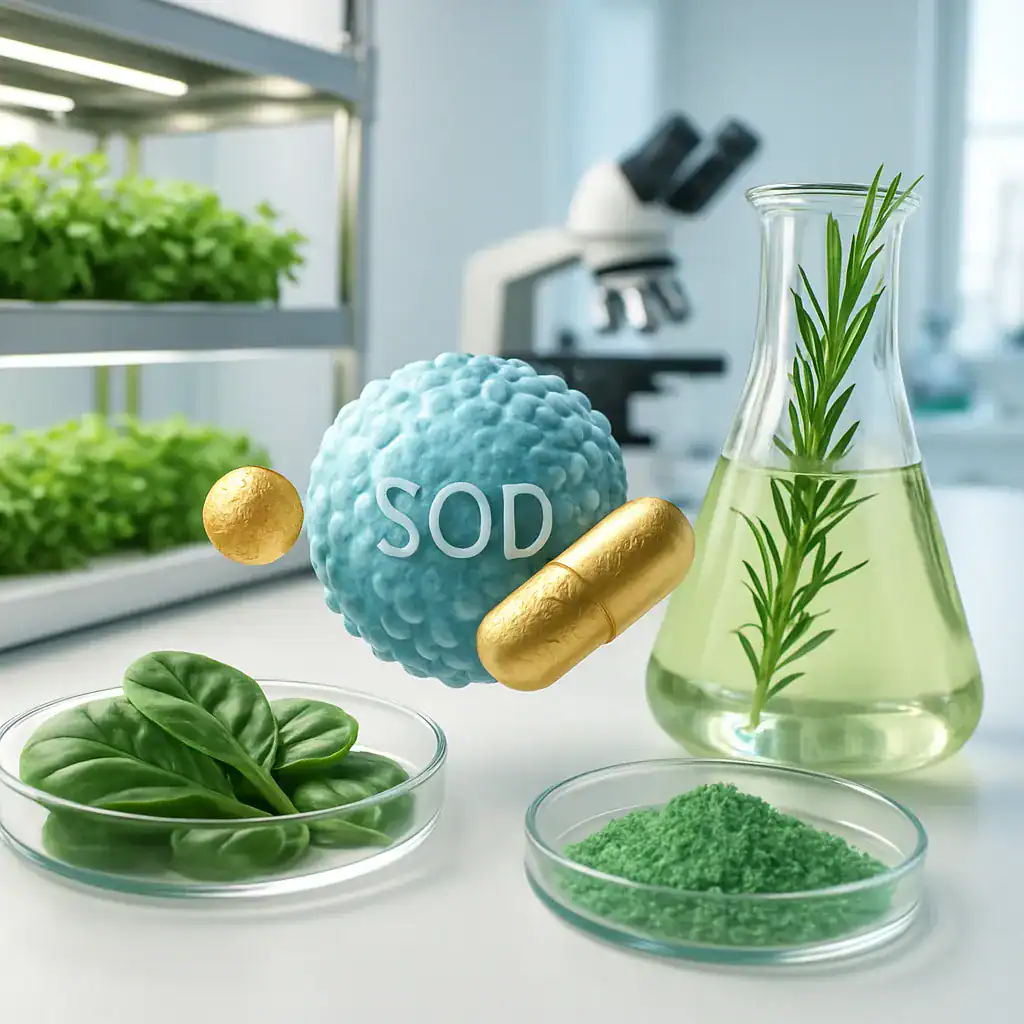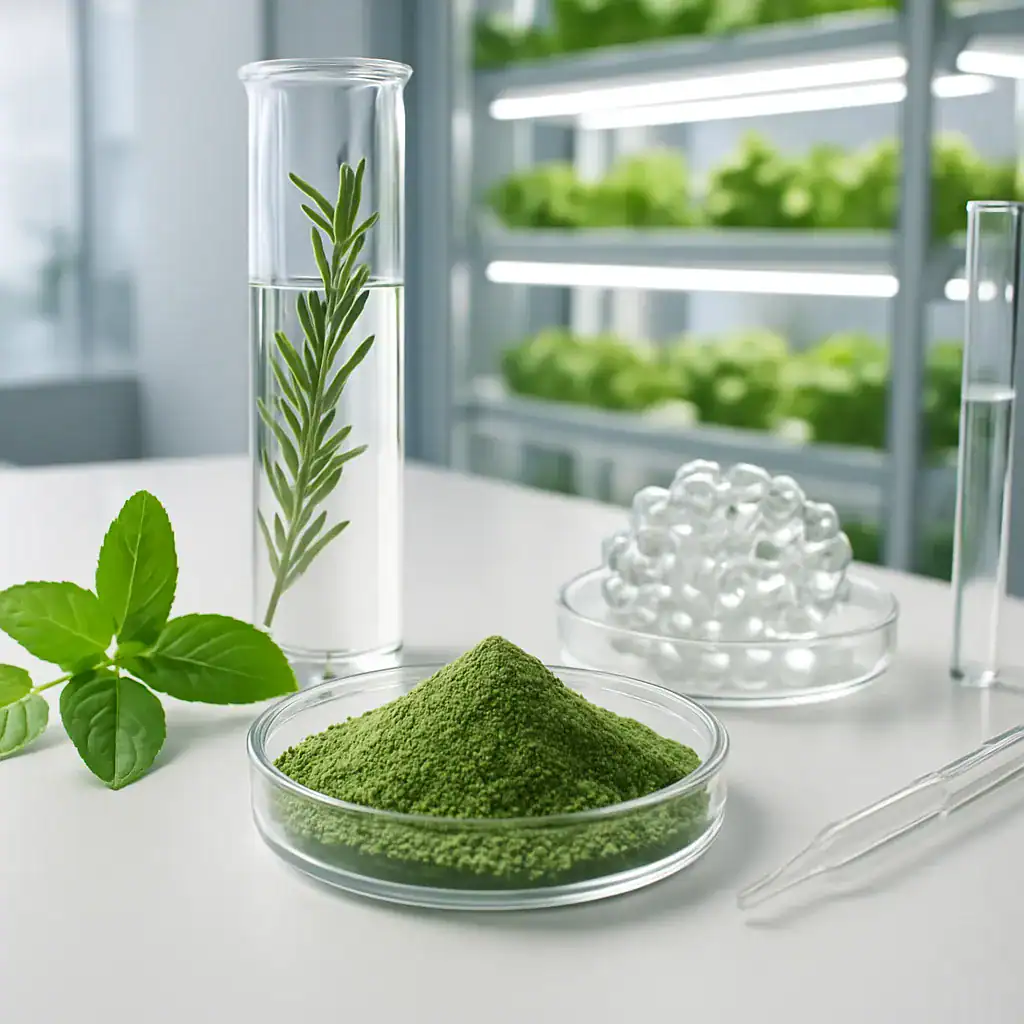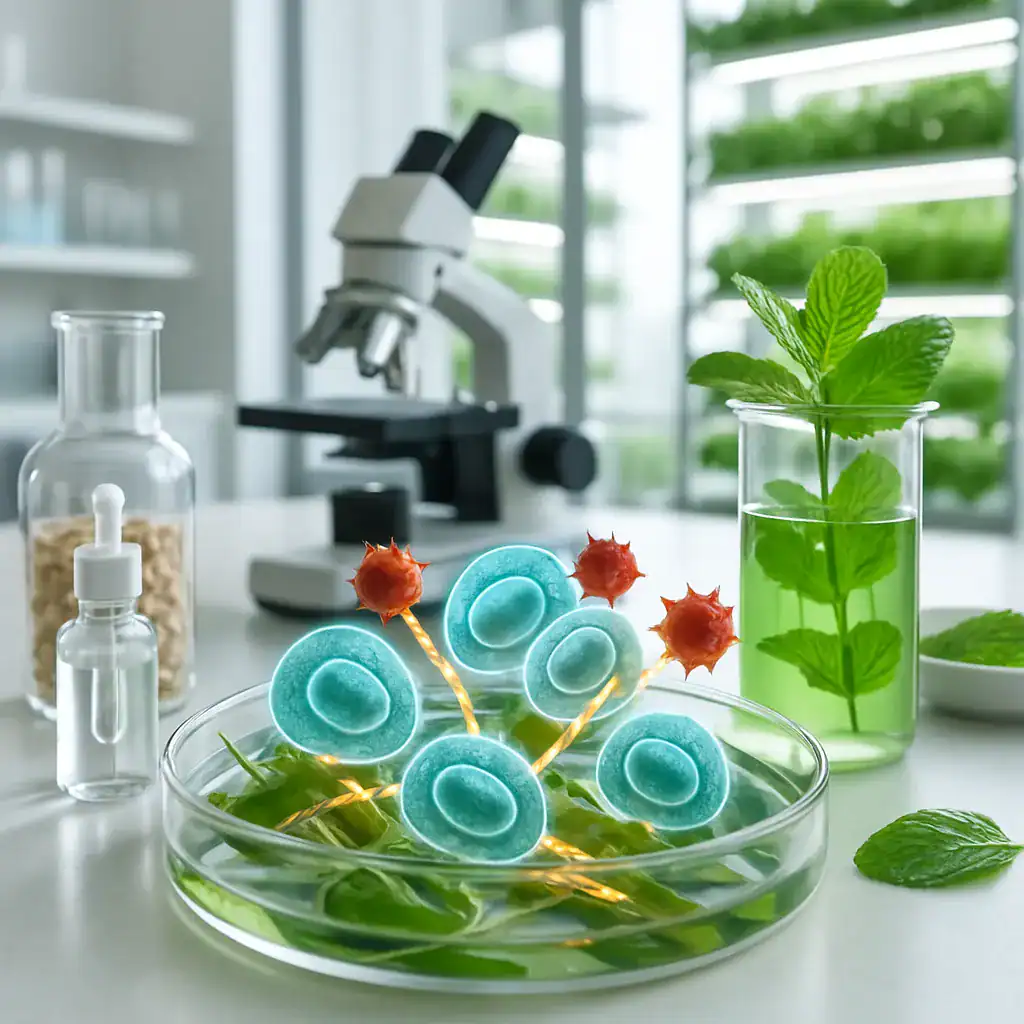How Sustainable Herbal Extracts Support Environmental Conservation
What Is the Carbon Footprint of Farming?
When we talk about the carbon footprint of farming, we’re referring to the total greenhouse gas emissions produced directly and indirectly by agricultural activities. You might be surprised to learn that agriculture accounts for approximately 24% of global greenhouse gas emissions, making it one of the largest contributors to climate change. But have you ever considered that the food on your plate represents a complex chain of environmental impacts?
The carbon footprint of farming encompasses several key greenhouse gases: carbon dioxide (CO₂) from energy use and land conversion, methane (CH₄) primarily from livestock and rice production, and nitrous oxide (N₂O) from fertilizer application and manure management. These gases have different warming potentials — methane, for instance, is 25 times more potent than CO₂ in trapping heat in our atmosphere over a 100-year period.
Modern agricultural practices have intensified these emissions through increased mechanization, synthetic fertilizer use, and large-scale livestock operations. That’s clear, but the relationship between farming and carbon emissions is multifaceted. Agriculture can also serve as a carbon sink through proper soil management techniques that sequester carbon dioxide from the atmosphere.
For both our planet’s health and sustainable food production, understanding and addressing farming’s carbon footprint has become increasingly crucial. This knowledge empowers farmers, policymakers, and consumers to make informed decisions that support more environmentally responsible agricultural systems.
The Environmental Impact of Conventional Farming
Emissions from Industrial Agricultural Practices
Conventional farming methods contribute significantly to greenhouse gas emissions through multiple pathways. You’ve likely heard about the environmental concerns surrounding industrial agriculture, but the specific mechanisms might surprise you.
Synthetic fertilizers represent one of the largest sources of agricultural emissions. When you apply nitrogen-based fertilizers to crops, a portion converts to nitrous oxide (N₂O) — a greenhouse gas approximately 300 times more potent than CO₂. In your experience as a nutritionist, you’ve probably encountered clients who prefer organically grown produce not just for health reasons, but also because of these environmental considerations.
Soil tillage, another common conventional practice, releases stored carbon into the atmosphere by disturbing soil aggregates that protect organic matter. This process not only contributes to carbon emissions but also degrades soil health over time. Have you ever wondered why some agricultural regions that were once highly productive now require increasingly higher inputs to maintain yields?
Farm machinery powered by fossil fuels generates significant CO₂ emissions through the combustion of diesel and gasoline. From planting to harvesting, each mechanical operation adds to agriculture’s carbon footprint. The energy required for irrigation systems, particularly deep well pumping, further compounds these emissions.
Livestock Production and Methane Emissions
Livestock production deserves special attention in any discussion of agricultural carbon footprints. You’ve likely worked with clients who question whether reducing meat consumption truly makes an environmental difference — the answer is decidedly yes.
Enteric fermentation — the digestive process in ruminant animals like cattle and sheep — produces methane as a byproduct. This single source accounts for roughly 40% of all agricultural greenhouse gas emissions globally. When you consider that a single dairy cow can produce up to 500 liters of methane per day, the cumulative impact becomes clearer.
Manure management practices also significantly influence emission levels. When animal waste decomposes in anaerobic conditions (without oxygen), it releases methane rather than breaking down into less harmful compounds. Large-scale confined animal feeding operations (CAFOs) concentrate this problem, creating “hot spots” of emissions.
Feed production for livestock compounds the issue by requiring vast agricultural lands that could otherwise serve as carbon sinks or food production for human consumption. That’s clear when you consider that approximately one-third of global cropland is dedicated to producing animal feed rather than direct human food.
Sustainable Solutions and Future Directions
Regenerative Agriculture Practices
Regenerative agriculture offers promising approaches to significantly reduce farming’s carbon footprint while improving overall ecosystem health. You may have clients who express interest in foods produced using these methods, and for good reason — they represent a fundamental shift in agricultural philosophy.
Cover cropping stands as one of the most effective regenerative practices. By maintaining living plants on farmland year-round, cover crops capture atmospheric carbon through photosynthesis and transfer it to the soil through their root systems. This process, known as carbon sequestration, actively removes greenhouse gases from the atmosphere. But have you ever considered that a properly managed cover crop can sequester up to 3 tons of CO₂ equivalent per hectare annually?
No-till or reduced tillage farming preserves soil structure and minimizes carbon release. When farmers adopt these practices, they allow organic matter to accumulate rather than decompose rapidly, effectively storing carbon below ground. You’ve likely noticed the growing “no-till” labels on certain products as farmers recognize both the environmental and marketing benefits of these approaches.
Crop rotation and diversification improve soil biology while reducing the need for synthetic inputs. By alternating different plant families, farmers naturally break pest cycles and enhance nutrient availability, reducing reliance on chemical fertilizers and pesticides that contribute to emissions. This echoes the advice you might give clients about diversifying their diets — both approaches yield multiple benefits.
Vertical Farming and Technological Innovation
Vertical farming represents one of the most promising technological innovations for reducing agriculture’s carbon footprint. As an entirely controlled growing environment, vertical farms minimize land use while maximizing production efficiency.
These systems dramatically reduce transportation emissions by enabling food production directly in urban centers where consumption occurs. When you advise clients on “food miles,” vertical farming presents the ultimate solution — produce grown potentially in the same building where it’s consumed. This proximity eliminates the need for long-distance transportation and refrigeration, two significant sources of food-related carbon emissions.
Water usage in vertical farms typically requires just 5-10% of the amount needed for conventional field agriculture, addressing another critical environmental concern. The precision delivery of nutrients and water means virtually no runoff or waste, eliminating a major source of agricultural pollution and emissions.
Energy efficiency continues to improve as vertical farming systems incorporate renewable energy sources and advanced LED lighting technologies. While early systems were criticized for high energy demands, modern operations increasingly utilize solar, wind, and other clean energy sources to power their facilities.
Companies like PhNóva are pioneering these innovations through their Vertical Farming Botanics division. By combining vertical farming techniques with nutraceutical product development, they’re creating sustainable, plant-based health solutions with significantly smaller carbon footprints than conventional alternatives. Their approach represents the future intersection of agricultural sustainability, nutritional science, and environmental responsibility.
Our Key Areas of Expertise




The Interconnection Between Farming Carbon Footprint and Health Products
Agricultural Emissions and Nutraceutical Production
The carbon footprint of farming extends far beyond basic food production, directly influencing the sustainability and efficacy of health-promoting products. When you examine the full lifecycle of nutraceuticals and other health supplements, you’ll find that agricultural practices form the foundation of their environmental impact.
Conventional farming methods used to grow botanical ingredients for health products typically rely on intensive agricultural practices that contribute significantly to greenhouse gas emissions. The cultivation of medicinal herbs, functional food ingredients, and pharmaceutical precursors often involves substantial amounts of synthetic fertilizers, pesticides, and irrigation—all of which increase the carbon intensity of these products.
Consider the common ingredients found in many supplements you might recommend to clients:
- Turmeric requires approximately 1,500-2,000 liters of water per kilogram of dried product
- Ginseng cultivation can involve 3-7 years of growth with regular pesticide applications
- Echinacea and other medicinal herbs often require energy-intensive processing and drying
These resource-intensive processes highlight why innovative companies are reimagining how health-promoting botanicals are produced.
Vertical Farming: Revolutionizing Nutraceutical Production
Vertical farming represents a paradigm shift in how botanical ingredients for health products can be cultivated with minimal environmental impact. By growing plants in vertically stacked layers, often in controlled environments, this approach dramatically reduces the land, water, and carbon footprint associated with traditional cultivation methods.
For companies like PhNóva specializing in nutraceuticals, vertical farming provides several distinct advantages:
- Reduced transportation emissions through localized production
- Elimination of weather-dependent harvest fluctuations
- Precise control over growing conditions to maximize bioactive compound development
- Year-round production capabilities regardless of season
- Significant reductions in water usage (up to 95% less than conventional farming)
The controlled environment of vertical farms also enables the cultivation of plants with optimized levels of beneficial compounds without the need for genetic modification. You can appreciate how this approach aligns with consumer preferences for natural products with minimal environmental impact.
Bioavailability Challenges and Carbon-Intensive Processing
The journey from farm to finished health product introduces additional carbon considerations that many consumers overlook. Bioavailability—how effectively your body can absorb and utilize a compound—presents a significant challenge in nutraceutical development that often requires energy-intensive solutions.
Traditional methods to enhance bioavailability typically involve:
| Processing Technique | Carbon Impact | Industry Standard Usage |
|---|---|---|
| Solvent extraction | High (chemical production + waste disposal) | Very common |
| Spray drying | Moderate-high (heat energy requirements) | Standard practice |
| Microencapsulation | Moderate (specialized equipment + materials) | Increasingly common |
| Nanomilling | Moderate (equipment energy + specialized facilities) | Growing segment |
These conventional approaches require substantial energy inputs, often derived from fossil fuels, creating a carbon-intensive production chain that contradicts the health-promoting mission of the products themselves.
Exosomes and Nanodelivery: Low-Carbon Alternatives
Exosomes and natural nanodelivery systems represent a revolutionary approach to the bioavailability challenge with significantly lower carbon implications. These plant-derived extracellular vesicles naturally enhance the delivery of bioactive compounds without the energy-intensive processing methods traditionally employed.
PhNóva’s Exosomes-Nutra product line exemplifies this approach by leveraging natural nanocarriers that:
- Improve bioactive compound absorption while reducing the required dosage
- Minimize the need for synthetic enhancers and additives
- Require less energy-intensive processing than conventional methods
- Utilize the plant’s own delivery mechanisms rather than artificial alternatives
When you recommend products utilizing these technologies to clients, you’re not only suggesting more effective options but also supporting significantly lower carbon footprints compared to conventional alternatives.
Soil Health, Antioxidants, and Environmental Resilience
The relationship between soil health and antioxidant production highlights another critical interconnection between farming practices and health products. Regenerative agriculture techniques that minimize tillage and build soil organic matter not only sequester carbon but also influence the nutritional profile of plants.
Research indicates that plants grown in biologically active, carbon-rich soils often produce higher levels of protective compounds, including antioxidants like Superoxide Dismutase (SOD). This powerful enzyme, found in products like those offered by PhNóva, represents a fascinating overlap between environmental and human health:
- Plants produce SOD as a natural defense against environmental stressors
- Higher stress resilience in plants correlates with increased carbon sequestration
- These same compounds provide powerful antioxidant benefits for human health
- Farming practices that build soil carbon tend to increase plant SOD content
This virtuous cycle demonstrates how agricultural practices focused on carbon sequestration can simultaneously yield more potent botanical ingredients for health applications.
Climate Impact on Medicinal Plant Potency
Climate change, driven in part by agricultural emissions, creates further complexities in the production of health-promoting botanicals. Rising temperatures, altered precipitation patterns, and increased atmospheric CO₂ are changing the biochemical composition of medicinal plants worldwide.
Studies have documented several concerning trends:
- Reduced concentration of certain beneficial compounds under heat stress
- Altered ratios of active ingredients in complex botanical products
- Increased vulnerability to pests and diseases requiring more interventions
- Shifting growing regions, disrupting traditional medicinal plant sources
These impacts create a feedback loop where carbon-intensive farming contributes to climate conditions that may reduce the efficacy of the very health products derived from plants, necessitating more intensive cultivation or processing methods that further increase emissions.
R&D Consultancy
Discover how PhNóva’s R&D Consultancy can help transform your idea into a market-ready solution — with expert support in formulation, regulatory compliance, and innovative delivery systems to give your product a competitive edge.
FAQ's about How Sustainable Herbal Extracts Support Environmental Conservation
Get in Touch with PhNóva
Have questions or need expert guidance? Contact us today — our team is ready to assist you with tailored solutions for your formulations.

30/03/2025






